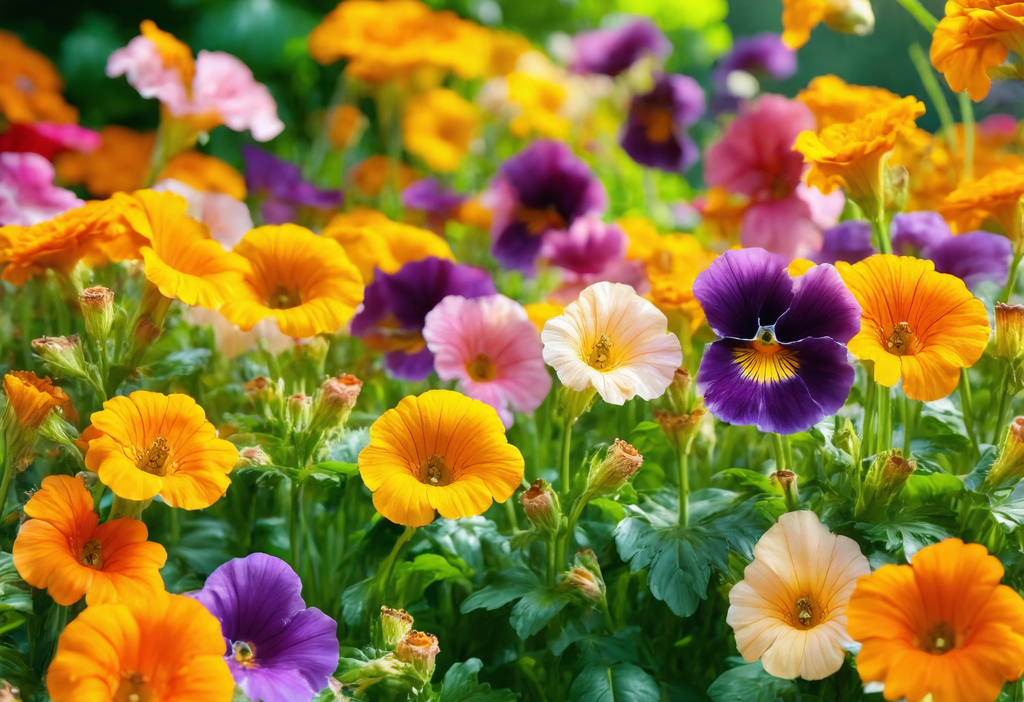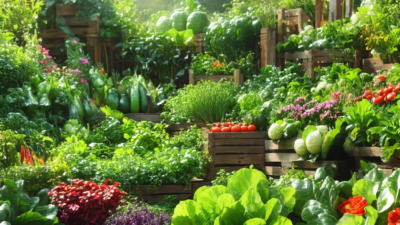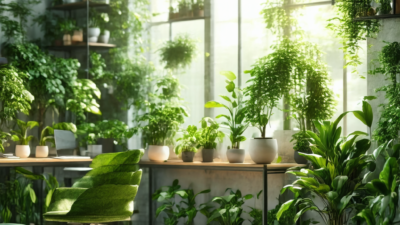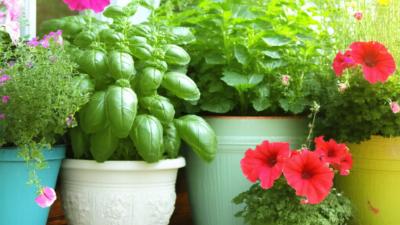Top 10 Edible Flowers That Will Transform Your Garden and Plate
Gardening is more than just a hobby; it’s an art that can also be a source of nutrition. Imagine walking through your garden, picking not just herbs but flowers that you can eat! Yes, edible flowers are a beautiful way to add color, flavor, and nutrients to your meals. In this blog, we’ll explore the top 10 edible flowers you should consider growing in your garden.
Why Grow Edible Flowers?
Before diving into our list, let’s understand why edible flowers are worth your time and space. Firstly, they add a burst of color to any dish, making meals visually appealing. Secondly, many edible flowers are packed with vitamins and antioxidants, offering health benefits beyond their aesthetic appeal. Lastly, growing them is a sustainable way to add variety to your diet.
Top 10 Edible Flowers You Should Grow
Here’s our curated list of the best edible flowers you can easily grow in your garden:
1. nasturtiums
Nasturtiums are a favorite among gardeners for their bright, cheerful blooms and peppery taste. They’re rich in vitamins C and A, making them a healthy addition to salads or as a garnish.
2. pansies
Pansies are not just pretty; they’re also edible! Their mild, slightly sweet flavor makes them perfect for adding a floral touch to desserts or drinks. They come in various colors, making your garden a rainbow of edibles.
3. calendula (pot marigold)
Calendula, often called pot marigold, has a tangy, peppery taste and is known for its medicinal properties. It’s great in soups or as a colorful addition to salads.
4. roses
Roses aren’t just for romantic gestures; their petals can add a delicate floral note to teas, jams, and desserts. Choose varieties without pesticides for safe consumption.
5. violets
Violets have a sweet, slightly earthy flavor. They’re perfect as a garnish or in salads and are rich in vitamins C and A.
6. sunflowers
Sunflowers are not just about their seeds; the petals are also edible! They have a mild, slightly sweet taste and can add a vibrant touch to your dishes.
7. borage
Borage is known for its star-shaped blue flowers that have a cucumber-like flavor. Use them in salads or as a refreshing addition to drinks.
8. nasturtiums
Did you know nasturtiums are also edible? Their vibrant flowers add a peppery kick to salads and can be pickled for a unique twist.
9. dianthus
Dianthus flowers, with their delicate taste reminiscent of clove or nutmeg, are perfect for adding an aromatic touch to your meals.
10. lavender
Lavender is known for its calming fragrance and sweet floral taste. Use it sparingly in teas, desserts, or as a decorative element on cakes.
Tips for Growing Edible Flowers
- Choose varieties specifically labeled as edible to ensure safety.
- Avoid using pesticides; opt for organic gardening methods instead.
- Harvest flowers in the morning when they’re at their freshest.
- Store them in the refrigerator in a sealed container or between layers of paper towels to maintain freshness.
Creative Ways to Use Edible Flowers
Once you’ve grown your edible flowers, the possibilities are endless. Here are some creative ideas:
- Add them to salads for a burst of color and flavor.
- Garnish desserts like cakes, ice creams, or mousses with fresh blooms.
- Make floral-infused oils or vinegars by steeping flowers in these mediums.
- Pickle nasturtiums or rose petals for a unique addition to appetizers.
Conclusion
Growing edible flowers is a delightful way to add variety and beauty to your garden and meals. Not only do they enhance the aesthetic appeal of your dishes, but many are also packed with essential nutrients. So why not give them a try? Start with one or two varieties and gradually expand your collection as you become more comfortable. Happy gardening and bon appétit!





